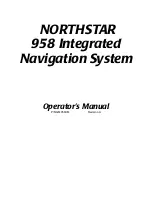
.
31
General Tracking
Most vehicle tracking is done within 0.2 - 0.3 miles of the target. The value
that a tracker brings is primarily being able to anticipate the targets move-
ment and actions beyond visual range. Important information such as:
“Did the target vehicle enter the on-ramp of a freeway?”
“Did the target stop at the next traffic light?”
“Did the target do a U-turn?”
are typical of questions which are critical to tactical tracking. The E-TRAK/R
allows law enforcement professionals to keep safe stand-off distance and
make good judgement before committing.
Range - will you ever need to rely on the ultimate range of the E-TRAK/R?
Yes - but usually this is only when something unexpected has happened
such as the target getting on the freeway and heading away at a rapid
speed. The experienced tracker will always close the gap to the 0.2 - 0.3
mile range again as soon as possible.
Vehicle surveillance techniques still apply
Familiarize yourself with the locale where you will do the tracking mission
and obtain area maps.
If you can, do a recon with the E-TRAK/R active, look for RF interference
and consider primary and secondary frequencies.
If a subject vehicle turns a corner, you have more choices using the E-TRAK/R’s
combination of RDF and GPS capabilities. For instance, you can follow on
a parallel route.
Always have a backup plan in case conditions or environment changes.
The use of multiple tracking vehicles, linked via radio communications,
can allow the net to be wider.
OPERATION
Summary of Contents for 5000
Page 1: ...RDF Pulse and GPS Enhanced Tracking System...
Page 29: ...35 NOTES...






































